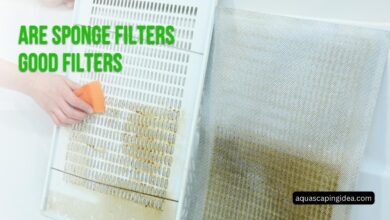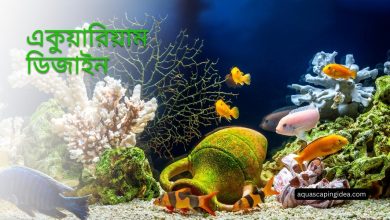How to Increase General Hardness in Aquarium?
Maintaining the perfect aquatic environment is a delicate balancing act that every aquarium enthusiast must master. Among the many factors that contribute to a thriving underwater ecosystem, water hardness plays a crucial role. General Hardness (GH) is a measure of dissolved minerals, primarily calcium and magnesium, in your aquarium water. For many fish species and aquatic plants, the right level of water hardness is essential for their health, growth, and overall well-being.
In this comprehensive guide, we’ll dive deep into the world of aquarium water chemistry, focusing on how to increase general hardness in your aquarium. Whether you’re a seasoned aquarist or just starting your underwater journey, understanding and managing water hardness is key to creating a vibrant and healthy aquatic habitat.
Understanding General Hardness (GH)
Before we explore the methods to increase general hardness, it’s crucial to understand what GH is and why it matters in your aquarium.
What is General Hardness?
General Hardness (GH) refers to the concentration of dissolved mineral ions, primarily calcium (Ca²⁺) and magnesium (Mg²⁺), in water. It’s typically measured in degrees of hardness (dGH) or parts per million (ppm). One degree of general hardness (1 dGH) is equivalent to 17.9 ppm of CaCO₃.
Why is GH Important?
General hardness plays several vital roles in your aquarium:
- Osmotic Regulation: Fish and other aquatic organisms rely on a specific range of dissolved minerals to maintain their internal fluid balance.
- Biological Processes: Many physiological processes in fish, such as bone growth and enzyme function, depend on the presence of calcium and magnesium ions.
- Plant Nutrition: Aquatic plants require calcium and magnesium for photosynthesis and overall health.
- pH Stability: Proper GH levels help stabilize pH, preventing rapid fluctuations that can stress aquarium inhabitants.
Ideal GH Ranges for Different Aquarium Types
Different aquatic species thrive in various hardness levels. Here’s a general guide:
| Aquarium Type | Ideal GH Range (dGH) |
|---|---|
| Soft Water | 3-6 dGH |
| Medium Water | 7-12 dGH |
| Hard Water | 13-20 dGH |
| African Cichlid | 12-20 dGH |
| Planted Tank | 3-8 dGH |
Note: Always research the specific requirements of your fish and plant species, as individual needs may vary.
Signs of Low General Hardness
Recognizing the symptoms of low GH is crucial for maintaining a healthy aquarium. Here are some indicators that your aquarium might have insufficient general hardness:
- Poor Plant Growth: Aquatic plants may show stunted growth, yellowing leaves, or other signs of nutrient deficiency.
- Shell Deterioration: Snails and other invertebrates may develop weak or pitted shells.
- Fish Health Issues: Fish may exhibit slow growth, lethargy, or increased susceptibility to diseases.
- Breeding Difficulties: Some species may have trouble breeding or producing viable eggs in soft water conditions.
- Unstable pH: You might notice frequent, unexplained fluctuations in pH levels.
Methods to Increase General Hardness
Now that we understand the importance of GH, let’s explore various methods to increase it in your aquarium.
1. Using Commercial GH Boosters
One of the easiest and most precise ways to increase GH is by using commercially available GH boosters.
Pros:
- Precise dosing
- Balanced mineral composition
- Easy to use
Cons:
- Can be more expensive than natural methods
- Some products may contain unnecessary additives
How to Use:
- Test your current GH levels using a reliable test kit.
- Calculate the amount of GH booster needed based on your aquarium volume and desired increase.
- Dissolve the appropriate amount in a small container of aquarium water.
- Slowly add the solution to your aquarium, preferably near a filter output for better distribution.
- Retest after 24 hours and adjust if necessary.
Tip: Always follow the manufacturer’s instructions and start with a lower dose to avoid drastic changes.
2. Adding Crushed Coral or Aragonite Sand
Crushed coral and aragonite sand are natural sources of calcium carbonate that slowly dissolve, increasing both GH and KH (carbonate hardness).
Pros:
- Natural and long-lasting
- Provides a substrate for beneficial bacteria
- Can be aesthetically pleasing
Cons:
- Slower to affect water chemistry
- May increase pH more than desired for some setups
How to Use:
- Rinse the crushed coral or aragonite sand thoroughly to remove dust.
- Add the material to a media bag and place it in your filter, or sprinkle it directly on the substrate.
- Start with small amounts (about 1 cup per 20 gallons) and monitor GH levels over time.
- Adjust the amount based on your testing results.
Note: This method is particularly suitable for African cichlid tanks or marine aquariums.
3. Utilizing Limestone or Dolomite
Limestone and dolomite are natural rocks rich in calcium and magnesium carbonates.
Pros:
- Natural and cost-effective
- Provides hiding spots and decor for fish
- Gradually releases minerals over time
Cons:
- Can be difficult to control precise GH levels
- May alter aquarium aesthetics
How to Use:
- Choose aquarium-safe limestone or dolomite rocks.
- Clean the rocks thoroughly to remove any contaminants.
- Place the rocks in your aquarium as decor or in areas with good water flow.
- Monitor GH levels weekly and adjust the amount of rock as needed.
4. DIY Mineral Mixes
For the more hands-on aquarist, creating a custom mineral mix can be an effective and economical solution.
Pros:
- Cost-effective for large aquariums
- Complete control over mineral composition
- Can be tailored to specific species requirements
Cons:
- Requires careful measurement and mixing
- Potential for errors if not done precisely
How to Create a Basic GH Booster:
- Mix the following in a clean, dry container:
- 3 parts Calcium Chloride (CaCl₂)
- 1 part Magnesium Sulfate (MgSO₄, Epsom salt)
- Store the mix in an airtight container.
- To use, dissolve 1 teaspoon of the mix per 20 gallons of water to raise GH by approximately 2-3 dGH.
Caution: Always add the mix to water, not water to the mix, to avoid excessive heat generation.
5. Using Cuttlebone
Cuttlebone, commonly used for bird cages, is an excellent natural source of calcium.
Pros:
- Natural and safe for most aquariums
- Slowly releases calcium over time
- Can be used as a decoration or hidden in the filter
Cons:
- May not increase magnesium levels
- Can float initially
How to Use:
- Rinse the cuttlebone thoroughly.
- Break it into smaller pieces if desired.
- Place it in your aquarium or filter.
- Replace when it becomes soft or disintegrates (usually after several months).
6. Incorporating Wonder Shells
Wonder Shells are commercial products designed to slowly release minerals into your aquarium.
Pros:
- Easy to use
- Provides a balanced mix of minerals
- Can help clarify water
Cons:
- May dissolve too quickly in some setups
- Limited control over mineral release
How to Use:
- Choose the appropriate size Wonder Shell for your aquarium.
- Place the shell in an area with good water flow.
- Replace when fully dissolved (typically every 2-4 weeks).
Monitoring and Maintaining GH Levels
Increasing GH is only part of the equation. Proper monitoring and maintenance are crucial for long-term success.
Regular Testing
- Test GH levels at least once a week, or more frequently when making adjustments.
- Use a high-quality liquid test kit for accurate results.
- Keep a log of your readings to track changes over time.
Gradual Adjustments
- Make small, incremental changes to GH levels.
- Aim for changes of no more than 1-2 dGH per day to avoid stressing your aquarium inhabitants.
Consider Total Dissolved Solids (TDS)
- While increasing GH, monitor Total Dissolved Solids (TDS) levels.
- Excessive TDS can stress fish and impact osmoregulation.
- Use a TDS meter to ensure levels remain within an acceptable range for your species.
Water Changes
- Regular water changes help maintain stable GH levels.
- If using tap water, test its hardness and adjust your GH-increasing methods accordingly.
- For very soft tap water, consider remineralizing your water change water before adding it to the aquarium.
Potential Risks and Precautions
While increasing GH is often beneficial, there are some risks to be aware of:
- pH Fluctuations: Many GH-increasing methods can also raise pH. Monitor pH closely and adjust if necessary.
- Overcompensation: Adding too much GH too quickly can stress or harm aquatic life. Always increase GH gradually.
- Species Compatibility: Not all aquatic species thrive in hard water. Research the specific needs of your fish and plants.
- Mineral Imbalances: Ensure you’re providing a balanced ratio of calcium to magnesium (typically 3:1 to 4:1).
- Equipment Impact: Very hard water can lead to mineral buildup on equipment. Regular cleaning may be necessary.
FAQ: Common Questions About Increasing Aquarium GH
Q1: How often should I test my aquarium’s GH?
A: Test GH at least once a week, and more frequently when making adjustments or after significant water changes.
Q2: Can I use tap water to increase GH?
A: It depends on your local water supply. Test your tap water’s GH first. If it’s higher than your aquarium’s GH, you can use it for water changes to gradually increase hardness.
Q3: Will increasing GH affect my pH?
A: Many methods of increasing GH can also raise pH, especially those involving calcium carbonate. Monitor pH closely when adjusting GH.
Q4: Is it possible to have GH that’s too high?
A: Yes, excessively high GH can be stressful for some species, particularly those adapted to soft water. Always research the optimal GH range for your specific fish and plants.
Q5: Can I use sea salt to increase GH?
A: While sea salt can increase GH, it’s not recommended for freshwater aquariums as it contains other marine elements that may be harmful to freshwater species.
Q6: How do I lower GH if I’ve added too much?
A: The most effective way to lower GH is through water changes with softer water. Reverse osmosis (RO) or deionized water can be used, but remember to remineralize it slightly before use.
Q7: Are there any fish that absolutely require high GH?
A: Yes, African cichlids, many livebearers, and certain species of rainbowfish thrive in harder water. Always research the specific requirements of your fish species.
Conclusion
Mastering the art of aquarium water chemistry is a rewarding journey that leads to a thriving, vibrant underwater world. Understanding and managing General Hardness is a crucial step in this process, directly impacting the health and vitality of your aquatic pets and plants.
By following the methods outlined in this guide, you can effectively increase and maintain optimal GH levels in your aquarium. Remember, the key to success lies in gradual adjustments, regular monitoring, and a deep understanding of your specific aquarium’s needs.
Whether you choose commercial products, natural methods, or DIY solutions, the goal remains the same: to create a stable, healthy environment that mimics the natural habitats of your aquatic companions. With patience, attention to detail, and a commitment to learning, you’ll be well on your way to achieving the perfect balance in your underwater ecosystem.
As you continue your aquarium journey, don’t hesitate to experiment, learn, and adapt your approach. Every aquarium is unique, and finding the perfect balance for your specific setup is part of the joy and challenge of this fascinating hobby. Happy fishkeeping!



